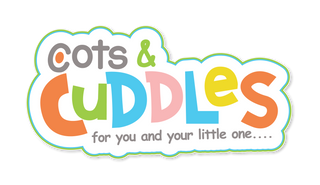Introduction:
Discipline refers to the practice of teaching, guiding, and enforcing rules, values, and behaviors to promote order, self-control, and moral development. It involves establishing boundaries and consequences to help individuals, particularly children, understand and adhere to appropriate standards of conduct and behavior. Discipline aims to instill positive habits, responsibility, and respect for oneself and others. It can be achieved through various methods, including clear communication, consistent expectations, setting limits, and providing guidance and corrective measures when necessary. Effective discipline is rooted in understanding, empathy, and the promotion of healthy development and growth.
This stage of development is filled with incredible growth and exploration, but it can also bring about various behavior issues and problems that can leave parents feeling overwhelmed. From sleep troubles and mealtime battles to tantrums and separation anxiety, mothers often find themselves searching for effective strategies to address these challenges while maintaining a loving and supportive environment. In this blog, we will explore the concept of positive discipline and how it can be a valuable tool for mothers of toddlers. Positive discipline is an approach that focuses on teaching and guiding children through respectful communication, clear boundaries, and encouraging positive behavior. It is a departure from traditional punitive measures and instead emphasizes understanding, empathy, and problem-solving skills.
By implementing positive discipline techniques, mothers can establish a nurturing environment that promotes healthy development and positive behavior in their little ones. This approach not only helps address specific behavior issues but also builds a strong parent-child bond, encourages self-discipline and self-control, fosters emotional intelligence and empathy, develops problem-solving and decision-making skills, and cultivates a positive and respectful family dynamic. Throughout this blog, we will explore common problems faced by mothers of toddlers, such as sleep issues, mealtime challenges, tantrums, separation anxiety, and limit testing.
We will delve into practical positive discipline techniques that can be employed to address these problems effectively. By understanding the underlying causes of behavior issues and implementing positive discipline strategies, mothers can navigate these challenges with confidence and create a harmonious environment for their little ones. It's important to remember that each child is unique, and what works for one may not work for another. This blog aims to provide a comprehensive guide to positive discipline techniques, but it's essential for mothers to adapt and tailor these strategies to suit their child's individual needs. With patience, consistency, and a nurturing approach, mothers can navigate the joys and challenges of raising toddlers, fostering their child's growth and setting a strong foundation for their future.
Understanding Positive Discipline

1.1 Definition of Positive Discipline:
Positive discipline is a parenting approach that focuses on teaching and guiding children through respectful communication, setting clear boundaries, and encouraging positive behavior. It is rooted in the belief that children can learn and grow best when they are treated with kindness, empathy, and understanding. Unlike traditional discipline methods that rely on punishment and control, positive discipline aims to foster a nurturing and supportive environment that promotes healthy development and positive relationships between parents and children.
1.2 Benefits of Positive Discipline:
Implementing positive discipline techniques offers numerous benefits for both children and parents. Here are some key advantages:
Builds a strong parent-child bond: Positive discipline techniques prioritize connection and communication, helping parents build a deep and trusting relationship with their children. This bond serves as a foundation for effective discipline and enables children to feel secure, loved, and understood.
Encourages self-discipline and self-control: By teaching children appropriate behavior and providing them with the tools to regulate their emotions, positive discipline promotes the development of self-discipline and self-control. Children learn to make responsible choices and understand the consequences of their actions.
Fosters emotional intelligence and empathy: Positive discipline emphasizes the importance of understanding and expressing emotions in a healthy way. It encourages parents to validate their children's feelings, teach them how to manage their emotions, and develop empathy towards others.
Develops problem-solving and decision-making skills: Instead of imposing punishments, positive discipline encourages children to think critically and find constructive solutions to conflicts. It nurtures problem-solving skills, fosters creativity, and teaches children to make responsible decisions.
Cultivates a positive and respectful family dynamic: Positive discipline creates an atmosphere of mutual respect and cooperation within the family. It promotes open communication, active listening, and collaborative problem-solving, allowing children to feel valued and heard
Common Problems Faced by Mothers of Toddlers

Toddlers are rapidly growing and exploring the world around them. However, this stage of development often presents unique challenges for mothers. In this section, we will discuss some common problems faced by mothers of toddlers and provide insights into how positive discipline techniques can help address them.
2.1 Sleep Issues:
Sleep problems are a frequent concern for mothers of toddlers. Some common sleep-related challenges include difficulty falling asleep, frequent night waking, and establishing a consistent bedtime routine. These issues can disrupt both the child's and the parent's sleep patterns, leading to tiredness and irritability during the day.
Positive discipline techniques can be applied to address sleep issues by creating a soothing bedtime routine. Consistency is key, as toddlers thrive on predictability. Establishing a calming pre-sleep routine, such as reading a book or singing a lullaby, can signal to the child that it is time to wind down. Additionally, setting clear sleep boundaries and using positive reinforcement, such as praising the child for staying in bed, can help reinforce positive sleep habits.
2.2 Mealtime Challenges:
Mealtime can become a battleground when toddlers exhibit picky eating habits or refuse certain foods. This can be concerning for mothers who want to ensure their child's nutritional needs are met.
Positive discipline techniques can be employed during mealtimes to encourage healthy eating habits. One approach is to offer a variety of nutritious foods and involve the child in meal preparation. Allowing toddlers to make choices from predetermined options, such as choosing between two vegetables, gives them a sense of control and can increase their willingness to try new foods. Positive reinforcement, such as praising the child for trying a new food or modeling healthy eating behaviors, can also be effective in encouraging positive mealtime experiences.
2.3 Tantrums and Emotional Outbursts:
Tantrums and emotional outbursts are common during toddlerhood, as children are still developing their emotional regulation skills. These intense displays of emotions can be challenging for mothers to manage, especially in public settings.
Positive discipline techniques focus on teaching emotional regulation and providing alternative ways for toddlers to express themselves. Offering comfort and understanding during a tantrum, rather than punishing or scolding the child, can help them feel supported. Teaching simple breathing exercises or providing a safe space for the child to calm down can also be beneficial. Engaging in open communication and validating the child's emotions can help them develop emotional intelligence and learn appropriate ways to express themselves.
2.4 Separation Anxiety:
Separation anxiety is a normal part of toddler development, but it can be distressing for both mothers and children. Toddlers may become clingy and exhibit fear or resistance when separated from their primary caregiver.
Positive discipline techniques can assist mothers in managing separation anxiety by gradually easing transitions and building trust. Providing reassurance, offering small separations followed by reunions, and maintaining a consistent routine can help toddlers feel secure. Engaging in activities that foster independence, such as playdates or daycare, can also support the child's development of resilience and self-confidence.
2.5 Limit Testing and Boundaries:
Toddlers often test boundaries as they seek to assert their independence and explore the world around them. This can result in challenging behaviors, such as defiance or pushing boundaries.
Positive discipline techniques help mothers set clear and consistent boundaries while promoting positive alternatives to unacceptable behavior. Using simple and age-appropriate language to explain rules and consequences, redirecting the child's attention to a more appropriate activity, and offering choices within reasonable limits can be effective strategies. Positive reinforcement and praise for complying with boundaries can reinforce positive behavior and encourage cooperation.
Positive Discipline Techniques for Toddlers

Positive discipline techniques provide mothers with effective strategies to guide their toddlers' behavior in a positive and nurturing manner. In this section, we will explore various techniques that can be implemented to promote positive behavior and encourage healthy development in children.
3.1 Positive Reinforcement:
Positive reinforcement involves acknowledging and rewarding desired behaviors, which encourages children to repeat those behaviors. It focuses on praising and acknowledging specific achievements to reinforce positive behavior. For example, praising a toddler for using their words to express their needs or offering a small reward, such as a sticker or a high-five, when they complete a task can be effective forms of positive reinforcement. By emphasizing and appreciating their efforts, children are motivated to continue displaying positive behaviors.
3.2 Redirection:
Redirection is a technique that involves diverting a toddler's attention from an undesirable behavior to a more appropriate activity. Toddlers often engage in behavior that may be inappropriate or unsafe due to curiosity or lack of understanding. By redirecting their attention to a different activity or object, mothers can help steer their focus away from negative behaviors. For example, if a toddler starts playing with something they shouldn't, a mother can gently guide them toward a toy or activity that is suitable and engaging.
3.3 Time-In:
Time-in is a technique that provides comfort and support to a toddler during moments of distress or emotional turmoil. Instead of isolating or punishing the child, time-in involves staying close to them and offering understanding and empathy. This approach helps toddlers feel loved and valued even when they make mistakes. By sitting with them, comforting them, and talking through their emotions, mothers can help their toddlers develop emotional resilience and teach them healthier ways to cope with difficult feelings.
3.4 Distraction:
Distraction is a technique that involves diverting a toddler's attention from a problematic situation to something more positive and engaging. Toddlers have limited attention spans, so redirecting their focus can effectively diffuse potential conflicts or unwanted behaviors. For example, if a toddler becomes upset over not getting their preferred snack, a mother can distract them by offering a different appealing food or engaging them in an enjoyable activity. By redirecting their attention, mothers can help toddlers move past negative emotions or behaviors and shift their focus onto more positive experiences.
3.5 Choices and Empowerment:
Giving toddlers limited choices empowers them to exercise autonomy within safe boundaries, fostering their sense of independence and self-confidence. By offering options, mothers allow their toddlers to feel involved and in control, reducing the likelihood of power struggles. For instance, when getting dressed, a mother can present two outfits and let the child choose between them. This technique not only promotes a sense of ownership over decisions but also encourages toddlers to develop decision-making skills within their capabilities.
Implementing Positive Discipline Techniques

4.1 Consistency and Predictability:
Consistency is a key element in implementing positive discipline techniques effectively. Toddlers thrive in an environment that provides clear expectations and boundaries. Consistent application of positive discipline techniques helps toddlers understand what is expected of them and what behaviors are acceptable. By establishing predictable routines for daily activities such as mealtimes, bedtime, and playtime, mothers can create a sense of security and stability for their toddlers. Consistency also means that all caregivers are on the same page and using similar approaches, which further reinforces the effectiveness of positive discipline techniques.
4.2 Modeling Positive Behavior:
Children learn by observing their parents and caregivers. As a mother, it's crucial to model the behavior you want to see in your toddler. This means demonstrating patience, kindness, and respect in your interactions with others, including your child. When faced with challenging situations, take a deep breath and respond calmly, showing your toddler how to manage emotions in a positive way. By modeling positive behavior, you provide your child with a blueprint for their own actions and set the tone for a loving and respectful relationship.
4.3 Communication and Active Listening:
Effective communication is a vital component of positive discipline. When addressing behavioral issues with your toddler, it's important to use clear and age-appropriate language. Explain why certain behaviors are not acceptable and offer alternative options. Active listening plays a crucial role in communication as well. Take the time to truly understand your toddler's needs and feelings. When they express themselves, validate their emotions and provide reassurance. By engaging in open and respectful communication, you create an atmosphere of trust and understanding, fostering a stronger connection with your child.
4.4 Self-Care for Mothers:
Parenting can be demanding, and it's essential for mothers to prioritize self-care. Taking care of your own physical and emotional well-being directly impacts your ability to provide positive discipline for your toddler. Find time for activities that rejuvenate and replenish your energy, whether it's exercising, pursuing hobbies, or spending time with friends. Seek support from your partner, family, or friends to ensure you have time for self-care. Additionally, practicing stress management techniques such as deep breathing, mindfulness, or seeking professional help if needed, can contribute to your overall well-being. Remember, a happy and healthy mother is better equipped to handle the challenges of parenting and provide a positive environment for their toddler.
Conclusion:
Implementing positive discipline techniques can be a game-changer for mothers of toddlers. By adopting this approach, mothers can effectively address the common behavior challenges faced during this stage of development and create a nurturing and supportive environment for their little ones. Throughout this blog, we have explored various positive discipline techniques, including positive reinforcement, redirection, time-in, distraction, and empowering choices. These techniques provide mothers with effective tools to guide their toddlers towards positive behavior, emotional regulation, and problem-solving skills.
Consistency and predictability are key when implementing positive discipline. By establishing consistent routines and boundaries, mothers can provide a sense of security and stability for their toddlers. Modeling positive behavior and practicing clear and calm communication also play a vital role in nurturing a positive parent-child relationship. It's important to recognize that self-care for mothers is equally crucial in this journey. Taking care of your own well-being allows you to be a more patient, understanding, and supportive parent. Prioritizing self-care and managing stress positively influence your ability to implement positive discipline techniques consistently.

As you navigate the challenges of raising a toddler, remember that each child is unique, and it may take time to find the right techniques that work best for your little one. Be patient with yourself and your child, as building new habits and behaviors takes time and practice. Embrace the journey of guiding your child towards a positive future, celebrating their milestones and growth along the way. By implementing positive discipline techniques, you not only address immediate behavior challenges but also lay the foundation for your child's long-term development. As they grow older, these skills will serve them well in navigating the world and forming positive relationships.
In conclusion, positive discipline offers an effective and nurturing approach to address the challenges faced by mothers of toddlers. With love, patience, and consistent implementation, you can create a harmonious and supportive environment for your child's growth, fostering their well-being and setting them on a path to becoming confident, compassionate individuals. Embrace this parenting journey and enjoy the precious moments with your little one as they blossom into their unique selves.

